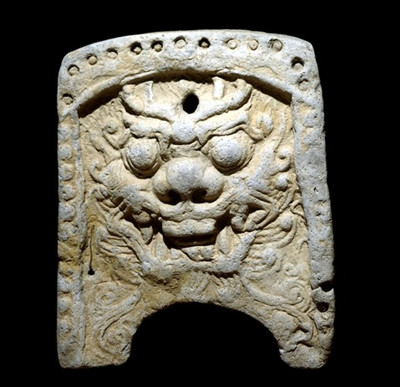Tiles like this were sought after not only because they were expensive to make but, above all, because they didn't catch fire like traditional thatch, and burning thatch was probably the greatest threat to any ancient city. By contrast, a tiled city was a safe city, and so it's perfectly understandable that a ninth-century Korean commentator, singing the splendours of the city at the height of its prosperity, should dwell lyrically on its roofs:
貴族使用瓦片����,不只因為它價格昂貴����,也是看中了它不似傳統的茅草般易燃。屋頂著火是所有古代都市最大的隱患之一�����。而鋪蓋瓦片的城市是相對安全的���。因此���,九世紀朝鮮半島的一位評論家在歌頌城市的華麗與高度繁榮時特別提到了屋頂����,這是十分合情合理的:
"The capital Kyongju consisted of 178,936 houses…There was a villa and pleasure garden for each of the four seasons, to which the aristocrats resorted. Houses with tiled roofs stood in rows in the capital, and not a thatched roof was to be seen. Gentle rain came with harmonious blessings and all the harvests were plentiful."
都城慶州共有十七萬八千九百三十六座房屋…不同的季節里����,王公貴族居住在不同的別墅與花園里。鋪蓋瓦片的房屋成行成列��,不再有一個茅草屋頂��。風調雨順�,五谷豐登��。
This tile, though, wasn't intended merely to protect you against the "gentle rain". That was the job of the more prosaic, undecorated tiles covering the whole roof. Sitting at the decorated end of a ridge, glaring out across the city, our dragon tile was meant to ward off a teeming invisible army of hostile spirits and ghosts-protecting you not just against the weather but against the forces of evil.
但我們的這塊瓦還不僅僅是用來遮擋柔風細雨的����,那是覆蓋整個屋頂�、更加普通、沒有裝飾的瓦片的工作���。而瓦當一般放在屋檐的最前端,俯視整個城市��。瓦當上的龍用于抵御無形的妖魔鬼怪大軍��。不止遮風擋雨�,更要驅走邪魔�。
The dragon on our roof tile was, in a sense, just a humble foot-soldier in the great battle of the spirits that was being perpetually fought out at roof level, high above the streets of Kyongju. And it was only one of 40 different classes of protective beings, that formed a kind of defensive shield against spirit missiles, and that could be deployed at all times to protect the people and the state.
從某種意義上說,在慶州屋頂發生的這場與邪魔的大戰中�,我們這片瓦當上的龍頂多只能算個小小的步兵:總共有四十種不同的生物一起組成了防護陣營���,隨時抵御鬼怪�,保衛國家和人民���。












